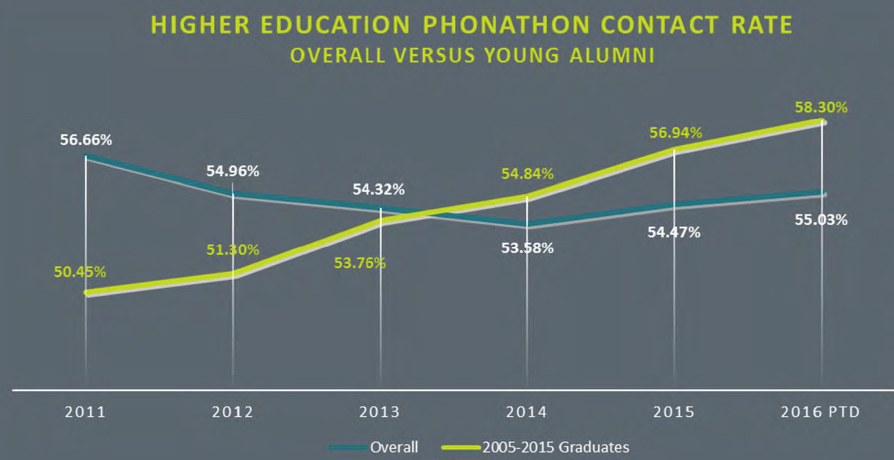fundraising
4 strategies for engaging Gen X and Millennial donors

Generation X and Millennial donors present a unique challenge and opportunity for engagement. These segments are philanthropic, but with two disparate donor behaviors. On the one hand, we see increased engagement in micro-giving to many causes (via crowdfunding and other mechanisms). On the other, we see a tendency to focus large donations to fewer recipients. These donor segments also demonstrate a strong focus on “causes” (rather than institutions), and a tendency to combine volunteerism with their primary charitable giving. Consider one recent report in which 47 percent of Millennial alumni reported making a donation to their alma mater, while 75 percent noted they would donate to other organizations before their alma mater.
Generation X and Millennial donors play a crucial role, however. They are the future pipeline for major and planned gifts, annual giving, and capital campaigns. The majority of major donors start out as small donors who grow into major givers, but that takes time, effort, and sound strategy to cultivate those donors. Institutions need to build these relationships with younger donors now in order to secure those future pipelines.
How are colleges and universities doing that? Here are four strategies that are working, straight from our recent white paper:
- Ensure the basics of online giving and mobile communication are in place. More than any other segment. Gen X and Millennial donors expect to be able to engage and transact online and via smartphones. This requires institutions to provide those mechanisms and to update data to support mobile, social, and text outreach.
- Provide the mechanisms for personalized giving. Leading institutions have begun to use crowdfunding to connect donors with causes and show the specific impact of gifts. They have channeled this along two fronts in particular: energizing students and faculty in funding projects, and promoting micro-giving— linked to social networks—with clear transparency of the results and impact. The social sharing that occurs during highly successful giving days is another example.
- Connect donors’ volunteer spirit with institutional philanthropy. For many institutions, this takes the form of alumni-based community outreach programs, coordinated with alumni relations. In many others, it is the direct form of engaging alumni in fundraising—after all, more than 40 percent of Gen X and Millennials have fundraised directly on behalf of a charity or participated in an event to raise money. It’s time to better engage these experienced ambassadors toward the cause of their alma mater.
- Modernize and align traditional communication channels in concert with digital. While some have speculated that new channels can simply replace traditional ones, the opposite is true: key young segments—more connected than ever— are responding to some traditional channels such as phone with increased frequency (see chart below). And they expect outreach and engagement—whether by email, voice, or website—to occur easily and seamlessly through their mobile devices.
Millennial donors will take fundraising calls (even if they say they won’t)
This last point about multichannel communications shows the importance of looking at preferences vs. actual behavior, especially when it comes to Millennial donors.
There is no question that digital engagement is crucial with this audience. Institutions have to engage Millennial donors across digital channels. Not only have Millennials expressed a preference for digital communication when surveyed, they have also indicated that the phone was the least desired form of communication.
But as the chart below shows, Millennials who receive fundraising calls have contact rates that exceed the overall contact rate. They are receptive to receiving fundraising calls.
Contact rates show young alumni more reachable than ever

This makes sense. After all, young alumni receive fresh pitches from institutions, usually from student fundraising ambassadors who are relatively close to them in age. These calls can build connections with Millennial donors and push them to give.
In addition, good data are crucial for good results with Millennial donors (and with all donors, really). In the case of Millennial calling campaigns, the ones that work use solid cell phone append data (often purchased) to greatly increase the number of valid numbers. Those institutions also manage the data well and keep complete, updated records.
The point is that, while preference data is important and often illuminates future trends, behavioral data that illustrate what donors will actually do is equally important. In a world where Gen X and Millennial donors have more ways than ever to connect with their alma maters, you do not want to rule out a potentially productive channel because donors say they don’t prefer it, but will clearly use it.
The pivot to engaging younger donors is clearly to digital engagement—but traditional channels continue to offer strong return to the institutions who are willing to invest in them strategically, all the way from the data to solicitation stages.
Hear more strategies for Gen X and Millennial donor engagement at our upcoming webinar
My colleagues Josh Robertson and Brian Gawor will dive into this topic in greater detail in an upcoming webinar, Turning Gen X and Millennial Alumni Into Loyal Donors. Attendees will also have an opportunity to receive a free Millennial engagement scorecard.
And if you have any questions about this post or these strategies, please contact us.
